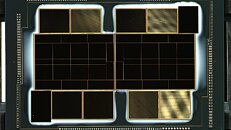
Next-gen NVIDIA "Ada" GPUs to Possibly Use 21 Gbps Memory
Everyone's favorite GPU-news leaker Kopite7kimi has updated his tweet from April 1 with more specific board part numbers, and suddenly the information contained there—which could have been misinterpreted as an April 1st joke—now all seems to add up with our own posting from last month about memory bus widths. The update seems to indicate the boards will now feature 21 Gbps memory, which is the same as what we saw on the recently made available RTX 3090 Ti cards, and Videocardz goes further to speculate the 3090 Ti could have been a dry run for the upcoming cards, including with a similar 600 W TDP rating to follow. Note also that the leaker is shying away from referring to these as the RTX 4080/4090 series, leaving room in case NVIDIA decides to jump in naming scheme for reasons including marketing and what the competition decides.





















